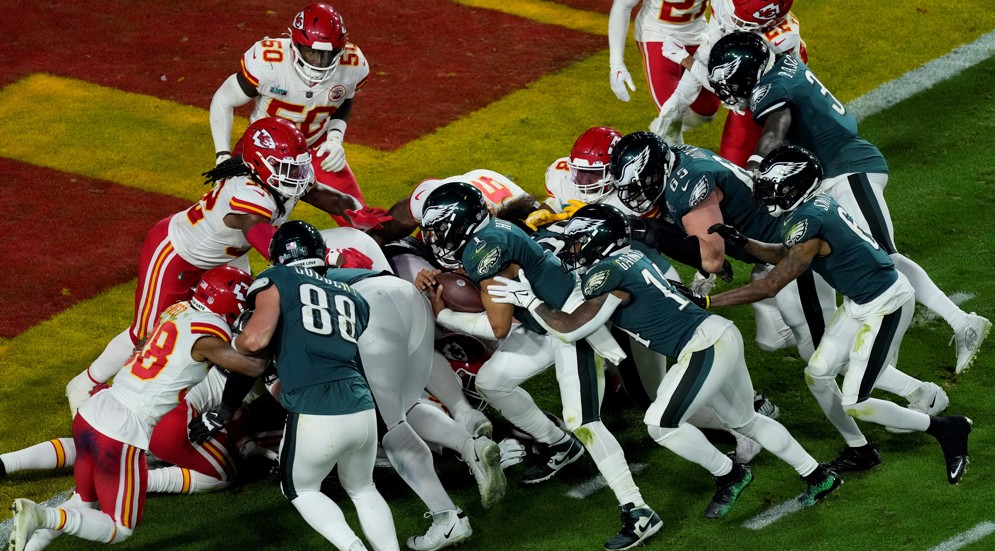The Extra Point What We Learned About Quarterback Push Sneaks During the 2022 NFL Season
April 25, 2023

From 2017 through the 2022 NFL regular season, the rate of all quarterback sneaks increased by nearly three times (0.39 per game to 1.08). During the 2022 season, there was a dramatic uptick in “push sneaks” where players lined up behind/offset to the QB in a sneak formation and immediately pushed the back of the QB (indirect pushes are less clear). This contrasts with the “traditional” sneak, where the QB is not intentionally pushed from behind.
To better understand and define the impact of push sneaks, the NFL reviewed sneaks of all kinds using film from the 2017 through 2022 seasons. For a play to be considered a sneak, the QB must receive an under-center snap and immediately move forward once possession has been established.
Here is the information collected for each play:
Here is the information collected for each play:

Traditional
Figure 1: Two examples of traditional sneaks.

Push Sneak
Figure 2: Two examples of push sneaks. LEFT: Derek Carr (QB #4) is pushed by Alec Ingold (#45), RIGHT: Jalen Hurts (QB #1) is pushed by Miles Sanders (RB #26) and A.J. Brown (WR #11).
Philadelphia Eagles at Arizona Cardinals | 2022 Regular Season - Week 5
Jalen Hurts (QB #1) is pushed by Miles Sanders (RB #26) from a variation of the Maryland I Formation.
Tampa Bay Buccaneers at Miami Dolphins | 2017 Regular Season - Week 11
Ryan Fitzpatrick (QB #14) is pushed by Doug Martin (RB #22), Chris Godwin (WR #12), and Cameron Brate (TE #84) from a variation on “victory formation”.

Table 1 provides a summary comparing the success rate of push sneaks versus traditional sneaks, based on the line of scrimmage.
Overall, success rates were similar for both push and traditional sneaks, with push sneaks slightly more effective from near the offense’s own goal line. However, success rates are not consistent for all with high push sneak rate teams (Buffalo Bills, Cleveland Browns, Dallas Cowboys, Indianapolis Colts, and Philadelphia Eagles) ahead of the pack in terms of efficiency on both traditional and push sneaks.
In terms of the players doing the pushing, approximately 45% of all pushers were running backs, 25% tight ends, 15% wide receivers and 11% fullbacks (up to three players on any given play can be considered a pusher). Miles Sanders was the leader with 18 “push assists” over the study period.
The majority of sneaks not from the offense’s own goal line occurred on third/fourth down or the opponent’s goal line. Additionally, on plays where the QB jumps over the line of scrimmage (in all areas of the field), the success rate is 79%.
In summary, the NFL reviewed video and Next Gen Stats of thousands of plays to check for the presence and type of QB sneaks. While push sneaks have increased in frequency over the last two years, they do not appear to be more effective than traditional sneaks at gaining the offense a first down.
Note: Due to the amount of manual film review required and no clear definition for a push sneak, the numbers reported might vary slightly from those presented elsewhere publicly, such as those in Kalyn Kahler’s series of articles on The Athletic.
Contributed by: Juliana Bushnell, Ananya Singh, Andrew Patton, and Michael Lopez